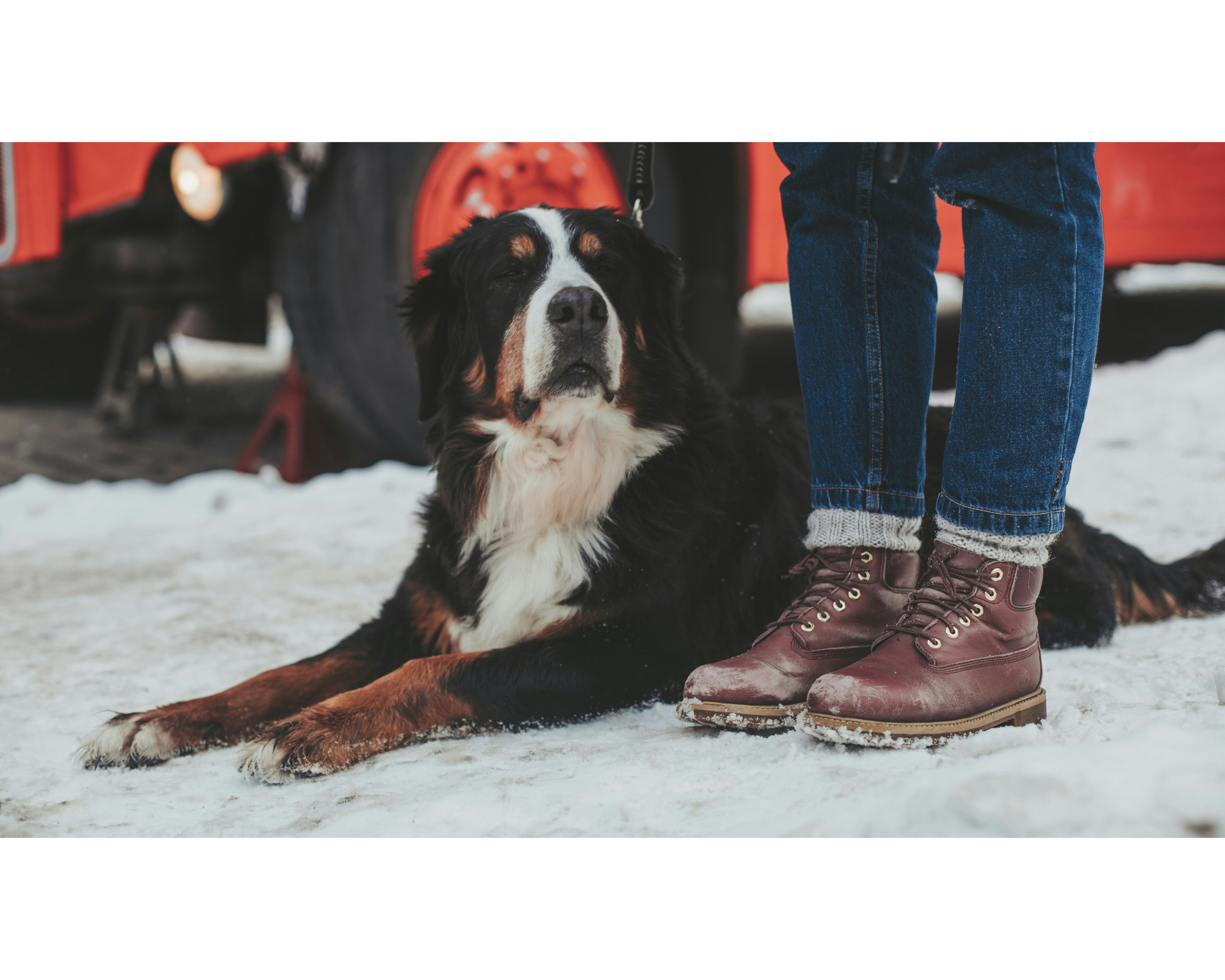

Winter Safety for Your Gentle Giant: Tips for a Safe and Cozy Season
Winter can be a magical time for both you and your dog—snowy walks, cozy evenings by the fire, and the crisp chill in the air. But for owners of giant breed dogs, the colder months bring unique challenges and safety concerns. From slippery terrain to icy paws, winter requires a little extra care to keep your gentle giant healthy, happy, and comfortable.
Here’s a guide to help you navigate the season and ensure your big dog stays safe and cozy all winter long.
1. Cold-Weather Paw Care
Your dog’s paws are their first line of contact with winter’s harsh elements, and for giant breeds, that contact can be even more intense due to their size and weight. Ice, snow, and de-icing chemicals can cause irritation, dryness, and even burns on their paw pads. Keeping those big paws protected is a top priority.
Tips for Protecting Their Paws:
- Paw Balms: Before heading out for a walk, apply a protective paw balm to shield their pads from ice and salt. Reapply after walks to moisturize and soothe.
- Booties: Dog booties provide excellent protection against sharp ice and harmful chemicals. Make sure they’re snug but not too tight for your dog’s comfort.
- Post-Walk Rinses: Always rinse your dog’s paws with warm water after walks to remove salt, chemicals, or debris. Follow up with a towel dry to prevent cracking.
Signs of Paw Trouble:
- Limping or favoring one paw.
- Licking their paws excessively.
- Visible redness, cracks, or peeling on the paw pads.
A little extra attention to their paws will go a long way in keeping your dog comfortable and ready for their next adventure.
2. Hydration Is Still Important
While it’s easy to think dehydration is a summer concern, winter can be just as dehydrating for your dog. Indoor heating can dry out the air, and physical activity in cold weather still requires plenty of hydration. Keeping your dog’s water intake consistent is essential for their overall health.
Tips to Keep Your Dog Hydrated:
- Fresh, Clean Water: Make sure your dog has constant access to clean water indoors. If you take them outside for extended play, bring a portable water bowl.
- Outdoor Water Check: If your dog spends any time outside, ensure their water bowl doesn’t freeze over. Heated water bowls are a great solution for this.
- Hydration-Boosting Foods: Adding wet food, bone broth, or water-rich veggies like pumpkin to their diet can help keep them hydrated if they’re drinking less.
Hydration is critical to their overall wellness and helps regulate body temperature, even in the cold.
3. Avoid Overexertion During Winter Walks
Winter walks can be exciting for your dog, but icy sidewalks and snow-covered paths can be tougher to navigate for giant breeds. The uneven terrain increases the risk of slips and falls, and overexertion can strain their joints and muscles.
Exercise Tips for Winter Walks:
- Keep Walks Short and Controlled: Opt for shorter walks on particularly icy or snowy days to reduce strain and injury risk.
- Use a Harness for Stability: A well-fitted harness gives you better control and helps prevent accidents if your dog pulls or slips.
- Indoor Alternatives: On days when it’s too cold to go outside, try mental stimulation games like puzzle toys or hide-and-seek to tire them out indoors.
Remember, a little exercise goes a long way in the winter, especially for giant breeds who are prone to joint issues.
4. Keep Them Warm in the Cold
Not all giant breed dogs are equipped to handle the cold equally. While breeds like Newfoundlands and Saint Bernards thrive in cooler temperatures thanks to their thick coats, others like Great Danes or Irish Wolfhounds are more sensitive to the chill. Knowing your dog’s needs is key to keeping them comfortable.
How to Keep Them Warm:
- Invest in a Dog Coat: For short-haired breeds, a well-fitted coat can make winter walks much more comfortable. Look for waterproof options for added protection against snow and rain.
- Limit Outdoor Time: When temperatures drop below freezing, minimize time spent outside to prevent hypothermia or frostbite.
- Create a Cozy Indoor Space: Make sure your dog has a warm, draft-free spot to rest, such as an orthopedic bed with blankets.
Watch for signs like shivering, whining, or reluctance to walk—these indicate your dog may be too cold and need to head indoors.
5. Watch Out for Winter Hazards
Winter brings a few extra dangers that every dog owner should be aware of, especially for curious giant breed dogs who may be more likely to encounter these hazards.
Common Winter Hazards:
- Antifreeze: This chemical has a sweet taste but is highly toxic to dogs. Keep bottles securely stored and clean up any spills immediately.
- Toxic Plants: Holiday plants like poinsettias, mistletoe, and holly are harmful if ingested. Keep them out of reach.
- Slippery Surfaces: Keep your dog’s nails trimmed to improve traction on icy or slippery floors, and be cautious on outdoor steps or driveways.
A little prevention goes a long way in keeping your dog safe from these hidden dangers.
A Safe and Cozy Winter for Your Gentle Giant
Winter can be a wonderful time to bond with your gentle giant, as long as you take the right precautions to keep them safe and comfortable. From paw care and hydration to avoiding overexertion and managing cold temperatures, these small steps can make a big difference in their health and happiness.
Remember, your dog’s comfort and safety are always worth the extra effort. With the right care, you can ensure that this winter is not only safe but also filled with cozy moments, snowy adventures, and wagging tails.
What’s your gentle giant’s favorite part of winter? Share your tips or photos of your big dog enjoying the season in the comments below!
